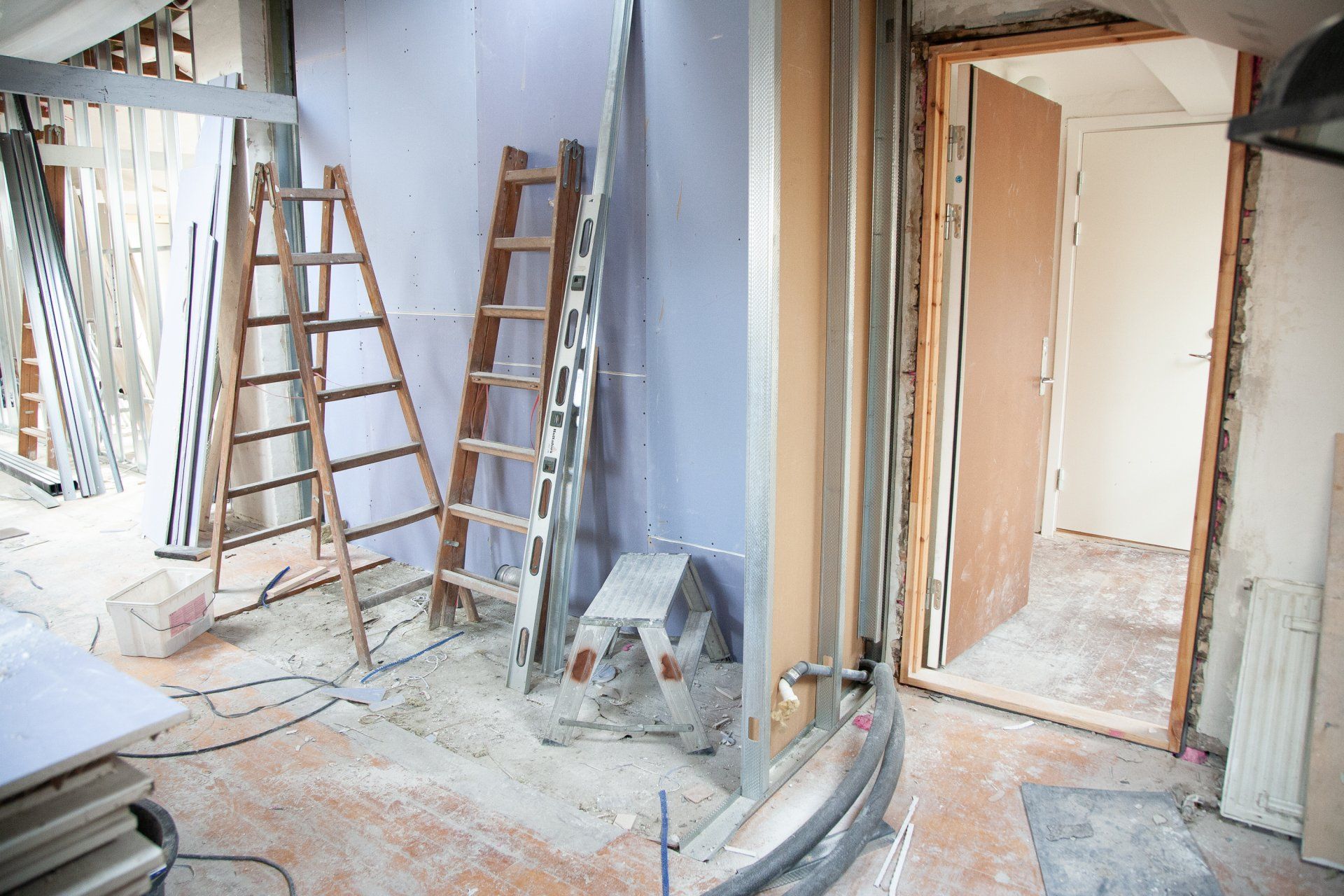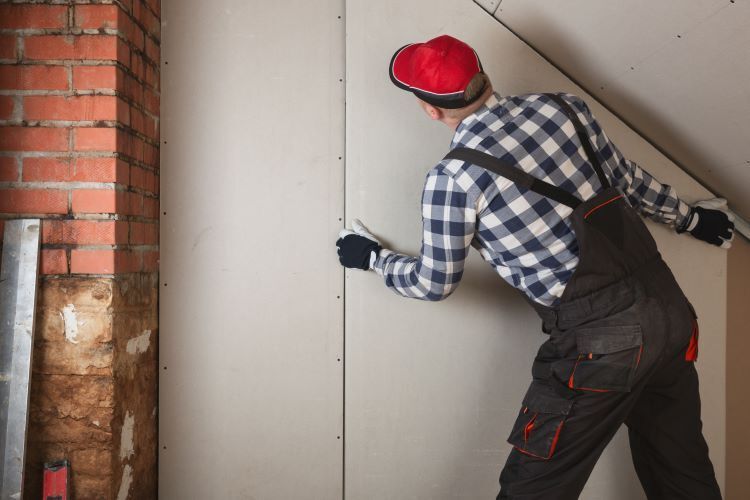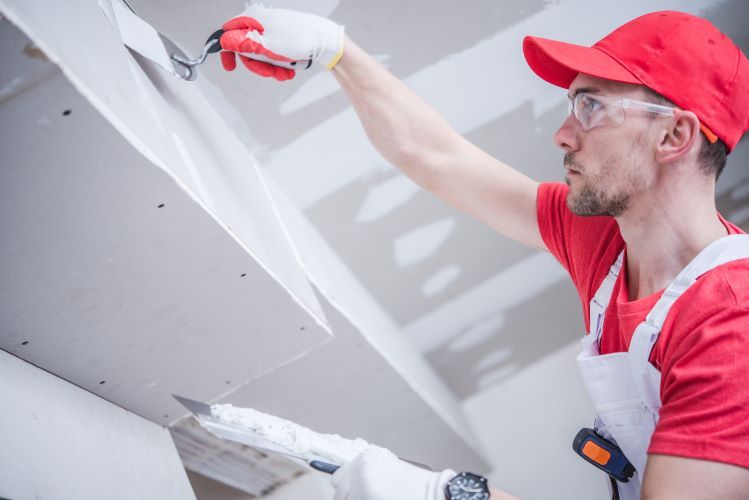Must-Have Supplies for Seamless Drywall Repair: A Complete Checklist

Whether you're dealing with minor drywall damage or a larger hole, repairing drywall can be a rewarding DIY project if you have the right tools and materials. At Barrie Drywallers, we've helped countless homeowners restore their walls and ceilings to pristine condition, and we know that having the right supplies is key to a smooth and seamless repair.
If you're planning to take on a drywall repair project, here’s a comprehensive checklist of the essential supplies you’ll need to get the job done right. With these tools, you’ll be able to handle any drywall issue, from small cracks to larger holes, and ensure a flawless finish.
1. Drywall Patch or New Sheet of Drywall
For small holes or cracks, you’ll need a drywall patch. For larger holes or more extensive damage, you may need to cut out a section of the wall and replace it with a new piece of drywall. Be sure to measure the area carefully to ensure you have the correct size patch or drywall.
- Pre-made patches: These are great for quick repairs of small holes (typically 4-6 inches). They are easy to install and require minimal finishing work.
- Full drywall sheets: For larger damage, you'll need a full sheet of drywall to cut to size and install.
2. Drywall Joint Compound (Mud)
Joint compound, often referred to as "drywall mud," is the main material used to fill the gaps and seams in drywall repair. It’s essential for smoothing out joints and covering screw holes.
- Ready-mixed joint compound: This is the most common type and is ideal for both small and large drywall repairs.
- Setting-type joint compound: This type dries faster and is often used in professional drywall work. It’s great for high-humidity areas or quick fixes.
3. Drywall Tape
To ensure a seamless finish, drywall tape is applied over the joints where two pieces of drywall meet. It helps to reinforce the joint compound and prevent cracking.
- Paper tape: Ideal for most drywall repairs, paper tape provides strong reinforcement and is widely used in professional drywall finishing.
- Fiberglass mesh tape: This self-adhesive tape is often used for quicker jobs or repairs on smaller holes. It is easy to apply and works well for basic repairs.
4. Putty Knife
A putty knife is used to apply the joint compound (mud) to the drywall. It’s essential for smoothing the compound and creating a flush finish with the surrounding wall.
- 3-inch or 4-inch putty knife: Ideal for filling small holes or cracks.
- 6-inch putty knife: Great for larger repairs and spreading mud more evenly over wider areas.
- 12-inch taping knife: Used for larger areas, taping knives help smooth out the compound for a flawless finish.
5. Sanding Sponge or Sandpaper
Once your joint compound has dried, you'll need to sand the area to ensure it’s smooth and level with the rest of the wall. Sanding helps remove any excess mud and leaves a seamless, professional-looking finish.
- Sanding sponge: These are flexible and can easily reach into corners and crevices.
- Fine-grit sandpaper (220-grit): This is perfect for sanding drywall and ensuring a smooth surface after applying joint compound.
- Pole sander: For high ceilings or walls, a pole sander can help you reach difficult areas without needing a ladder.
6. Drywall Screws or Nails
If you are replacing a section of drywall, you will need drywall screws or nails to attach the new piece to the studs in the wall. Drywall screws are the most common option as they hold the drywall firmly in place.
- Drywall screws: These screws are specifically designed for drywall installation and have a bugle-shaped head that sits flush with the wall.
- Drywall nails: Though less commonly used, nails can be an option for certain projects.
7. Utility Knife
A utility knife is essential for cutting drywall. Whether you need to cut a patch to size or trim edges for a smooth finish, a sharp utility knife is a must-have tool.
- Heavy-duty utility knife: Look for a knife with replaceable blades to ensure you always have a sharp edge for cutting through drywall.
8. Measuring Tape and Square
Accurate measurements are key when cutting drywall to fit around openings or replacing sections. A measuring tape and drywall square will help you cut your drywall to the correct dimensions.
- Measuring tape: Ensure you measure carefully to avoid mistakes.
- Drywall square: A drywall square helps to make precise cuts, especially for straight edges.
9. Primer and Paint
Once your drywall repair is complete and the mud is dry and sanded, it’s time to prime and paint. The primer will help seal the repaired area, and the paint will give it a smooth, finished look that blends with the rest of your wall.
- Primer: Use a drywall primer to ensure that your paint adheres properly to the new joint compound.
- Wall paint: Choose a paint that matches the existing color on your walls. You may need to apply multiple coats for full coverage.
10. Drop Cloth or Plastic Sheeting
Drywall repairs can be messy, especially when sanding and applying joint compound. Protect your floors and furniture with a drop cloth or plastic sheeting.
- Drop cloth: Covers large areas of the floor to catch dust and debris.
- Plastic sheeting: Helps protect furniture or anything else in the room from dust or splashes.
11. Gloves and Safety Glasses
Safety should always come first when handling drywall and tools. Protect your hands and eyes during the repair process with gloves and safety glasses.
- Work gloves: Protect your hands from cuts and abrasions while working with drywall and tools.
- Safety glasses: Protect your eyes from drywall dust and debris, especially when sanding.
12. Clean Cloth or Sponge
After sanding, use a clean cloth or sponge to wipe away dust and debris before priming and painting. This ensures a smooth finish and helps your primer and paint adhere better.
Conclusion
With the right supplies, drywall repair can be a straightforward DIY task. Whether you’re fixing a small hole or tackling a larger project, having all the necessary tools on hand will make the job easier and help you achieve a seamless, professional-looking result.
At Barrie Drywallers, we specialize in high-quality drywall repair for homes and businesses in Barrie, Ontario. If you’re not sure where to start or need expert help with your drywall project, our team is here to assist. With the right materials and techniques, we’ll ensure your walls are as good as new.
Ready to get started? Contact Barrie Drywallers today for all your drywall repair needs!
You Might Also Enjoy:



Contact Us!
